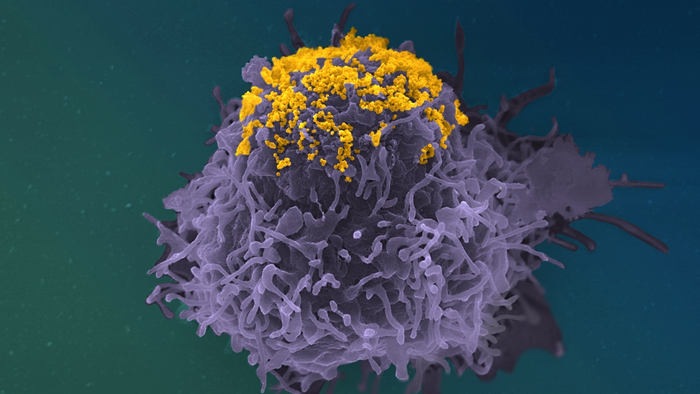Scientists find new more infectious and damaging HIV variant in the Netherlands
People infected with the variant had between 3.5 and 5.5 times higher viral load

Scientists have discovered a new HIV variant in the Netherlands that is more infectious and damaging to health – findings which suggest that pathogenic microbes do not always evolve to become less virulent.
The new “VB” variant – for virulent subtype B – showed significant differences before antiretroviral drug treatment compared with individuals infected with other HIV variants, say the researchers, including those from the University of Oxford in the UK.
Individuals infected with this variant had a viral load between 3.5 and 5.5 times higher than those infected with other variants, according to the study, published in the journal Science on Thursday.
In the past, researchers have raised concerns that the HIV-1 virus, which affects over 38 million people worldwide and has caused 33 million deaths to date, could develop new mutations that could have significant impacts on the virus’s transmissibility.
The new analysis of over 100 infected people suggests the VB variant boosts the number of viral particles in a person’s blood and makes them more likely to transmit the virus.
However, the researchers add that on starting treatment, individuals with the VB variant had similar immune system recovery and survival to individuals with other variants of the virus.
The HIV virus causes damage to the immune system by attacking the CD4 lymphocyte cells, and the study found that the rate of CD4 cell decline in those infected with the new variant was nearly twice as fast, placing them at risk of developing AIDS much more rapidly.
“By the time they were diagnosed, these individuals were vulnerable to developing AIDS within 2 to 3 years,” the researchers wrote in the study.
The scientists call for further studies to understand the mechanism which makes the VB variant more transmissible and damaging to the immune system.
These insights could lead to new targets for next-generation antiretroviral drugs.
“Before this study, the genetics of the HIV virus were known to be relevant for virulence, implying that the evolution of a new variant could change its impact on health,” Chris Wymant, study lead author from the University of Oxford’s Big Data Institute and Nuffield Department of Medicine, said.
“Discovery of the VB variant demonstrated this, providing a rare example of the risk posed by viral virulence evolution,” Dr Wymant added in a statement.
The study also underscores the need for individuals at risk of acquiring HIV to have access to regular testing to allow early diagnosis, followed by immediate treatment, researchers say.
“This limits the amount of time HIV can damage an individual’s immune system and jeopardise their health. It also ensures that HIV is suppressed as quickly as possible, which prevents transmission to other individuals,” study senior author Christophe Fraser from the University of Oxford’s Big Data Institute explained.
The new variant was first identified in 17 HIV-positive individuals from the BEEHIVE project – an ongoing study that collects samples from across Europe and Uganda.
Since 15 of these individuals came from the Netherlands, the scientists then assessed data from a cohort of over 6,700 HIV positive individuals in the Netherlands from which they identified an additional 92 individuals with the variant.
They estimate that this variant may have first risen during the late 1980s and 1990s in the Netherlands, and spread more quickly than other variants during the 2000s.
However, the researchers say its spread has been declining since around 2010.
“Age, sex, suspected mode of transmission, and place of birth for the aforementioned 109 individuals were typical for HIV-positive people in the Netherlands, which suggests that the increased virulence is attributable to the viral strain,” they write in the study.
Subscribe to Independent Premium to bookmark this article
Want to bookmark your favourite articles and stories to read or reference later? Start your Independent Premium subscription today.

Join our commenting forum
Join thought-provoking conversations, follow other Independent readers and see their replies